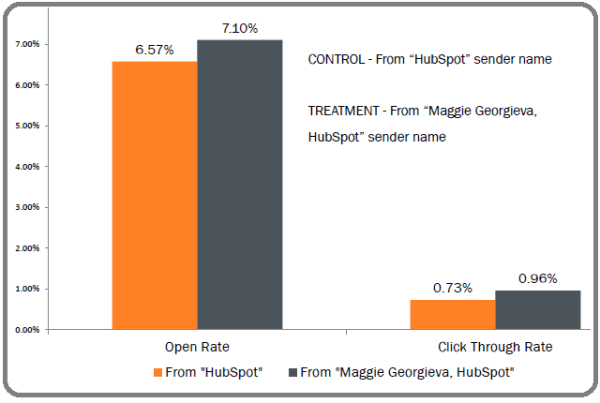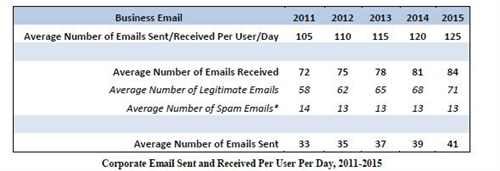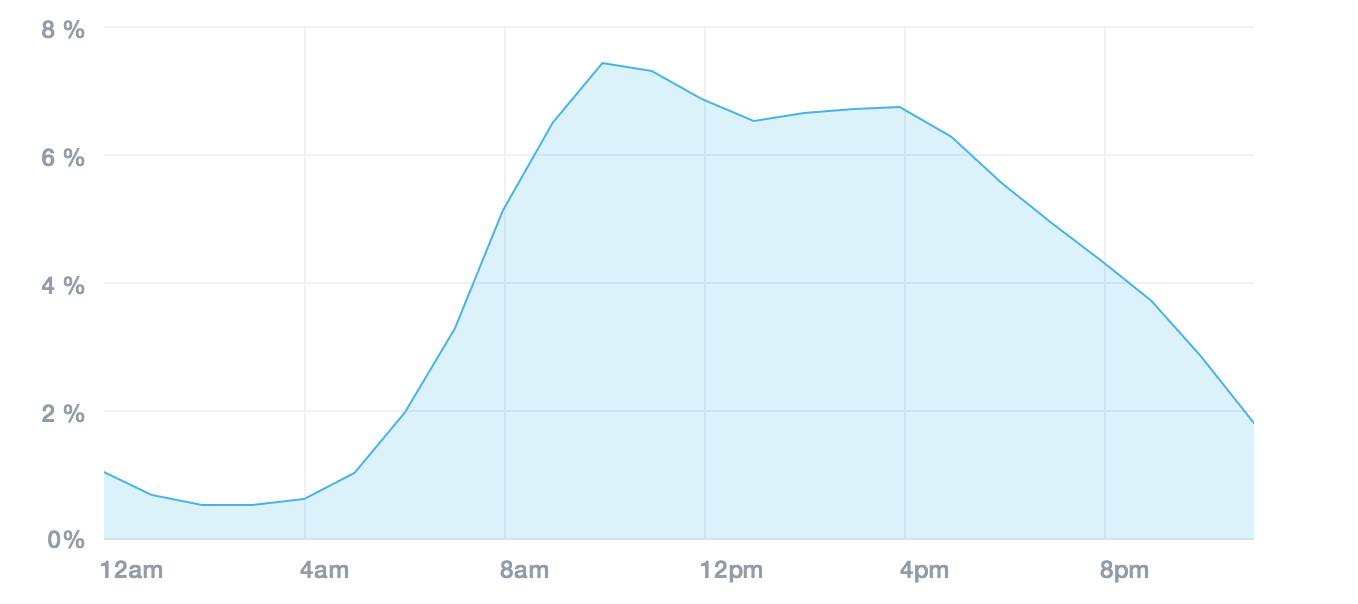
Email has been announced dead for multiple times over the last decade. However, as we’ve seen in an earlier post, email marketing should be an essential part of your marketing mix. According to a 2011 study by eMarketer an astonishing 97% of small business use email marketing to connect with their customers.
When it comes to email marketing, the first hurdle to overcome is email open rate. Because if you can increase your open rates, you’ll be able to boost your email conversion rate too. Makes sense, right? Even if you give away the most beautiful vacation to your subscribers, if they don’t open the email they will never find out.
A deep understanding of your customers as well as their needs and habits, their tone of voice and everything else that is part of their unique personality is key in creating an effective email marketing strategy.
One of the first step to always ask yourself if: “If I received this email from another company, would I open it?” But what if you want more? A weak open rate can be the sign of many different things. Let’s look at them and see how you can improve the open rates for your company.
Average open rate
Before diving into improving your individual open rates, let’s first look quickly at some averages. While an average open rate depends on different industries and email providers. As soon as you start diving below 15% it should be setting off some alarm bells. A lot of email providers give you the option to provide the industry you’re operating in and helps you to give the average numbers per industry. If you don’t know where you need to look, the amazing folks over at Constant Contact have a great overview that is regularly updated.
As you can see from the table the worst performing industry to be in concerning open rates is the insurance one with an average open rate of 6.95%. The biggest open rates come from the child care services industry with a whopping 40.25%. If you score even higher with your newsletter, there is time right now for high-fiving your colleagues 😉 but nevertheless you should always try to improve!
So what are the things to look at when improving?
#1 Send emails from a real person
The “from” portion of your email is the first way to start making your email more human. When we send out our occasional email, we send it from Hans, not from Inbound Rocket. Why?
A couple of years ago Hubspot did an A/B test to see what would get a higher open rate. Would “Hubspot” or “Maggie Georgieva, HubSpot” get a higher open rate?

According to their research as seen in the above image, sending from a real person increased both the open rate and the conversion rate of the email. By sending out our emails from “Hans”, we create email by people, from people, for people. As the research proves, people connect with people and not with impersonal brands.
Of course, there are occasions where you think you can’t send out the email from one person within your organisation. You might have a larger team and want to send out different types of emails, and would not like to send them from one person. Maybe, you think it might be a bad thing if one of your email addresses is being more open to the public. That it might end up as a way for the customers to start sending support questions that you want to have end up in a different place. If that’s the case, try to keep at least the “from” part of your emails consistent as much as possible. Keeping this consistent will train your readers and their spam filters to expect an email from the same sender.
#2 Make an incredible first impression
How many times in life have you been told that first impression are everything? Well they are, and the same holds true for anything your company does online. The better the first impression is, the bigger chance you have of earning trust and making sure your future emails get opened.
If you tell your subscribers that subscribing will get your readers some behind-the-scenes info, that that is what you will give. Behind-the-scenes information is what they’ve been expecting, so that is what you need to give. The only reason you have for sending them something they haven’t signed up for is when you sent them something that they didn’t expect. Something that makes a great lasting impression like a free surprise for people who join. Provide a great lead magnet, and deliver on that. But add that extra delight as well, this will set you out from the rest of the players in your field and makes them want to open your emails.
Want to go even further? You could start adding (ir)regular surprises to your emails. Your subscribers will love you for it.
#3 Make your subject line short and intriguing
Creating the subject lines for your email is almost the same as creating headlines for your blog posts. It needs to evoke emotion.
“You Are Not Alone” are the four words that achieved an average open rate of 90% according to Copyblogger. This works, because of the natural human desire for community. People want to feel like there are others going through their same challenge. This subject line grabs at you and makes you think, “I don’t want to be alone, maybe this will help.”
A report from Radicati Group found that average corporate email user sends and receives about 115 emails a day.

With that many emails no wonder why a large portion of that either goes to spam or trash and never gets opened. To make your subject lines perform better, make sure to give them a few of these characteristics:
- No tricks, your headline should tell them what to expect and no tricks. It might work once, but afterwards they will unsubscribe
- Numbers can do magic, using numbers in your blog headlines have proven increase readers engagement. The same holds true for email subject lines.
- Keep away from some words, according to a report by MailChimp the three worst words to use in a subject line are: Help, Percent Off, and Reminder. They’ve been overused by spammers, be sure not to sound like spam
- Avoid spam signals like ALL CAPPS and exclamations marks!!! Just like some words can trigger a sense of spam, adding ALL CAPS and lots of exclamation marks will trigger the same reaction.
- 50 characters is the ideal length of an email subject line. The reasoning behind this is that some email programs might cut characters off. So be sure to have your most important words at the beginning if you do have a longer subject line, but ideally 50 words are the ideal length.
#4 Consider the first sentence
Most email software nowadays shows the first few words of the first sentence in the inbox. So thinking about that first sentence is almost as important as thinking about the subject line of your email. As readers skim through their inbox, which email do you think they are more eager to open. One where they can read the first sentence “click here, if the email does not appear correctly”, or one which lures them in, into reading more of your amazing content?
The first words of your email should you sell the email, not take care of maintenance. Think of the opening line in your email as the sub-headline. If you’re designing your email template, make sure that the first words are visible and valuable. And if you’re writing your email, be sure to have those words reflect something that feeds the curiosity that the subject line has started.
#5 Use email authentication
It’s very easy to send a fake email on behalf of someone else. This practice called spoofing is how phishing and scamming emails happen. To protect the end-users, email providers like Gmail, Outlook and individual email providers have set up a system that verifies the sender of the email.
A lot of email newsletter providers offer the ability to do email authentication. By enabling this feature, you can increase the chances of your email getting into the email box of your subscribers. It’s simply a way to prove to the inbox of your subscribers that you are who you say you are. Email that fails this kind of check might not make it to the inbox and instead end up in the spam box of your subscribers.
#6 Timing is key
Just like sending out messages to your social media channels, there is a best time for sending out an email. According to research done by Campaign Monitor, the best time to send emails is around 10 AM in the morning.

Some other interesting stats from their research:
- Workday hours (9 am – 5 pm) are when over half of all email opens happen
- Peak open times are just before and after lunch
- Lunchtime opens only drop by a fraction
- Including lunch, 47% of emails are opened outside of work hours. Note is that the majority of these “non-working” opens occur on mobile devices
However, this is of course data which has been collected over a bunch of different industries over time. What works, in general, does not have to work for your company. So just like almost everything else which revolves around your company, you have to test this. Try sending out emails for a couple of months, with different sending times and try to figure out what gives the best open rates for you.
#7 Segment your list carefully
Depending on which type of business you’re running it might be worthwhile to start segmenting your list. This way you will be able to deliver easily, content that’s much more suited to your subscribers’ interest. Which, of course, results in better open rates. There are many different ways to do this, you if you’re a recruiter you could segment based on employers versus job-seekers for example. Other ways to start thinking about segmentation are based on the industry of your subscribers, purchase or time since your last interaction.
If you want to make sure that you can understand what your subscribers care about, try an online survey, ask for specific information in alternate emails or try building the information based on click behaviour in your email campaigns.
#8 Keep your List clean
Some internet service providers keep track of how active the people on your email list are. They use that information to impact deliverability. Keeping your list cleans, means removing all those inactive subscribers.
In an older but still relevant blog post on deliverability.com, they share three tips on keeping your list clean to improve the percentage of emails ending up in the inbox of your subscribers.
- Decide for yourself what inactive means. If it means not opening up your emails in half a year, it could be they are hurting your inbox rate
- Create a segment in your email service provider, to segment those inactive subscribers with the active subscribers and create a reengagement campaign to try to activate them again (remember that delighting of your subscribers from point 2, now’s the time to delight those non-engaged subscribers. Another step could be a non-HTML, personal email asking them why they aren’t opening your emails.)
- If they still don’t engage, it’s time to remove them from your list
It might be hurting for you to remove subscribers from your list, but it’s really for the best for your overall list health. It’s no use keeping the vanity metrics of list subscribers alive if they aren’t interacting
Email marketing can be difficult to comprehend and get really good results with sometimes. You’re competing with a very busy inbox, full of work, personal, and marketing emails. Make sure your email stands out.
Any strategies to add, which are doing wonders for your organisation? Leave them below in the comments!

